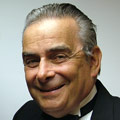Hi,
Love the site and the calm measured manner you guys take to things. I’m finding the Acell stuff really fascinating for a lot of reasons beyond my own hair concerns. I had a couple questions and was hoping you might be able to shed some light on them.
From what I understand, one of the many unanswered questions in the auto-cloning process is whether or not a plucked hair from the balding-immune donor zone, implanted into the bald area will continue to be fully immune to balding because of the mixed biological source nature of the hair/implant zone/newly generated follicle. Theortically couldn’t this issue be circumvented thusly :
1) Use standard FUE/implant techniques from donor areas
2) Depending on scalp availability, reseed these areas with acell plucked hairs
3) Harvest established acell hairs for further implanting
4) repeat until desired resultsNot to get into totally wacky territory here, but is there any investigatory efforts to see if Acell plucked hairs can be implanted in other areas of the body and harvested in that manner if scalp tightness is an issue? For instance, growing a crop of donor hair via auto-cloning on the arm/back/leg, and taking them for standard implant from there?
Perhaps you are misunderstanding what the auto-cloning technique with the ACell product is all about. The research we’re conducting is basically plucking out hair from a donor scalp area (where hairs are considered immune to genetic balding), applying the ACell products, and transplanting to an area of scalp where there is balding. We are not harvesting hairs to be multiplied in a lab. Growing a crop of donor hair is not what this is all about.
Finally, we still do not know if the transplanted ACell plucked hairs will continue to survive years down the line as if they are immune to genetic balding like standard transplanted hair follicles. We are all assuming that it will be just like transplanted hair follicles, but this has yet to be proven. That proof will come many years from now where we can follow those transplanted patients.

 Contrary to what you may think, I am available to anybody who wants to see me for a consultation. In fact, many of my patients are just the “average Joe”. Anyone can call 800-NEW-HAIR to setup an appointment.
Contrary to what you may think, I am available to anybody who wants to see me for a consultation. In fact, many of my patients are just the “average Joe”. Anyone can call 800-NEW-HAIR to setup an appointment.